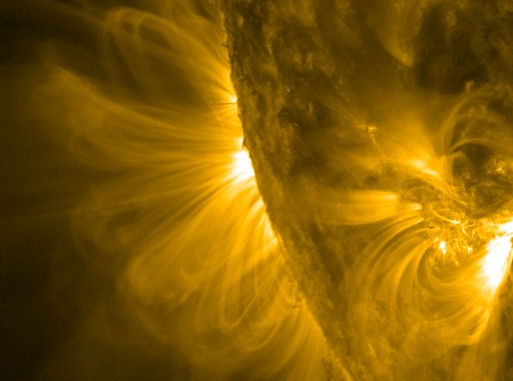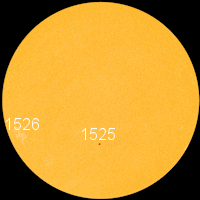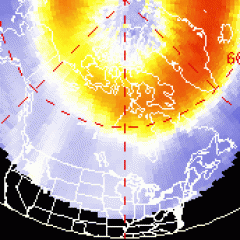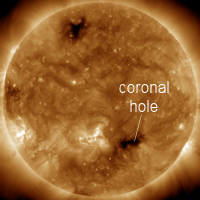A TASTE OF SOLAR MAX: Forecasters say solar maximum is still a year away. Earlier this month sky watchers got a taste of things to come when a powerful flare sparked Northern Lights over the United States as far south as Arkansas, Colorado and California. [full story] [video]
AROUND THE BEND? The Earth-facing side of the sun is mostly blank and quiet. This could change in the days ahead as a new sunspot emerges over the sun's southeastern limb. NASA's Solar Dynamics Observatory can see the active region's magnetic canopy, which is towering over the limb in advance of the sunspot itself:
The core of the active region should show itself no later than Tuesday. Meanwhile, solar activity is low. NOAA forecasters estimate a mere 1% chance of M- or X-class solar flares. Aurora alerts: text, voice.

![]()
Solar wind
speed: 476.0 km/sec
density: 2.8 protons/cm3
explanation | more data
Updated: Today at 1537 UT
![]()
X-ray Solar Flares
6-hr max: B3 1358 UT Jul22
24-hr: B5 0826 UT Jul22
explanation | more data
Updated: Today at: 1500 UT
![]()
![]()
![]()
Daily Sun: 21 Jul 12
![]()
![]()
None of the spots on the Earth-facing side of the sun pose a threat for strong flares. Credit: SDO/HMI
![]()
![]()
![]()
Sunspot number: 50
What is the sunspot number?
Updated 21 Jul 2012
Spotless Days
Current Stretch: 0 days
2012 total: 0 days (0%)
2011 total: 2 days (<1%)
2010 total: 51 days (14%)
2009 total: 260 days (71%)
Since 2004: 821 days
Typical Solar Min: 486 days
Updated 21 Jul 2012
The Radio Sun
10.7 cm flux: 92 sfu
explanation | more data
Updated 21 Jul 2012
![]()
![]()
![]()
Current Auroral Oval:
![]()
Switch to: Europe, USA, New Zealand, Antarctica
Credit: NOAA/POES
![]()
![]()
![]()
Planetary K-index
Now: Kp= 2 quiet
24-hr max: Kp= 3 quiet
explanation | more data
![]()
Interplanetary Mag. Field
Btotal: 3.8 nT
Bz: 1.0 nT north
explanation | more data
Updated: Today at 1537 UT
![]()
![]()
![]()
Coronal Holes: 21 Jul 12
![]()
![]()
A solar wind stream flowing from this coronal hole should reach Earth on July 23-24. Credit: SDO/AIA.





